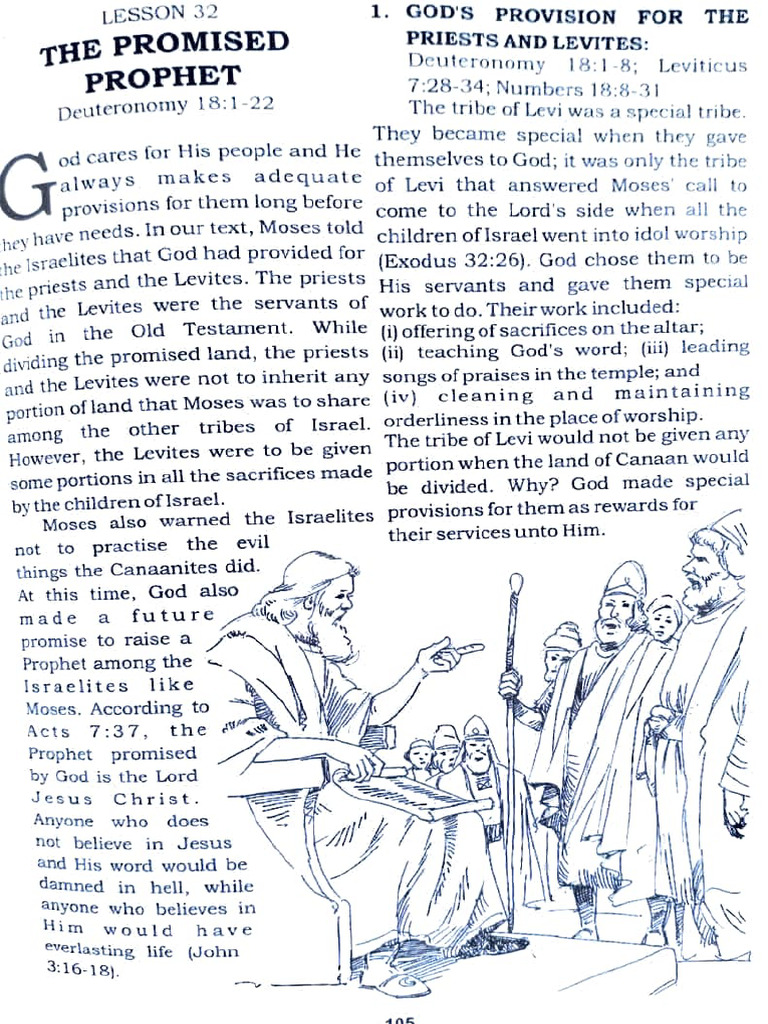The Bahá’í Faith, a relatively nascent world religion, offers profound insights through its teachings regarding the Promised Prophet, particularly as conceived through the lenses of biblical texts, especially the Book of Revelation. This exploration transcends simplistic interpretations and delves into the multi-faceted implications of prophetic fulfillment in the context of contemporary spiritual paradigms.
At the heart of Bahá’í teachings is the belief in a succession of divine manifestations, each of whom brings guidance suited to the needs of the time. This progression is not merely historical; it serves as a vital mechanism for the spiritual evolution of humanity. Bahá’ís assert that the Promised One of all ages is none other than Bahá’u’lláh, the founder of the Bahá’í Faith, who fulfilled the prophecies scattered throughout major religious texts, including Christianity’s eschatological reflections.
The Book of Revelation occupies a unique position within Christian scripture. Often enigmatic and cryptic, it presents a host of symbolic imagery that has garnered extensive interpretation across centuries. One common observation is the intense fascination many have with its prophetic elements. The allure lies not only in the vivid imagery of apocalyptic events but also in the promise of divine justice and the establishment of a new order. This fascination, however, runs deeper than a mere curiosity about the end of days; it beckons individuals to reflect on their own spiritual journeys and the overarching quest for truth.
This quest is encapsulated in the profound assertion that the essence of all religions is one. Within the pages of Revelation, themes emerge that resonate with the Bahá’í principle of unity. For instance, the concept of the ‘New Jerusalem’ symbolizes a spiritual awakening that transcends geographical and cultural boundaries. This transformation is embodied in the teachings of Bahá’u’lláh, who calls for the unification of humanity, urging followers to actively participate in the coalescence of diverse traditions.
Another critical aspect of the Book of Revelation is its portrayal of the duality of existence—light versus darkness, good versus evil. This duality is not merely theological; it presents an opportunity for introspection. The Bahá’í teachings emphasize that individuals must awake to their inner realities, recognizing the dichotomy existent within themselves. Engaging with the symbolism found in Revelation thus serves as a reflective tool, compelling believers to examine their values, intentions, and actions in the light of divine guidance.
Moreover, the transformative imagery in Revelation relates to the rectification of spiritual energies through the agency of prophetic figures. The Bahá’í understanding positions Bahá’u’lláh as the consummate manifestation, effectively embodying the promises foretold within this prophetic framework. The imagery employed by John of Patmos, particularly the figures representing divine justice and the restoration of harmony, parallels the Bahá’í narrative of embracing change and striving toward equity in a fractured world.
A point of profound intrigue is the concept of the ‘seals’ described in Revelation, which signify the unfolding of divine mysteries. Each seal’s breaking heralds a new era of understanding and enlightenment. For Bahá’ís, this elucidation resonates with their belief in progressive revelation, where new truths are unveiled in accordance with humanity’s capacity to receive them. This perspective encourages a dynamic approach to scripture, inviting adherents to not only glean historical interpretations but to apply these teachings to contemporary issues, such as social justice, environmental stewardship, and global unity.
The collective aspect of Revelation cannot be understated. It narrates a vision of a future where unity prevails, resonating deeply with Bahá’í principles that emphasize collective progression. The implications of these teachings encourage individuals to participate actively in the communal and societal realms, seeking solutions to injustices while fostering pathways toward reconciliation and mutual respect among diverse populations.
Additionally, the apocalyptic themes found in both the Book of Revelation and Bahá’í teachings serve as clarion calls for vigilance and fortitude. They compel humanity to awaken from complacency, conveying that spiritual realities demand active engagement. Bahá’í principles inspire adherents to take initiative in addressing both personal and societal discord, positioning themselves as agents of change and heralds of peace in turbulent times.
As one contemplates the essence of the Promised Prophet and the revelations gifted through various manifestations, it becomes increasingly clear that these teachings offer a mosaic of hope amid uncertainty. The Bahá’í perspective invites individuals to transcend superficial interpretations, advocating for a comprehensive understanding that encompasses not only the textual but also the experiential—engaging with revelations in a way that inspires action and reflective thought.
In conclusion, the intriguing motifs present in the Book of Revelation find their reverberation within Bahá’í teachings, culminating in a holistic vision for humanity’s spiritual evolution. The parallels drawn between the narratives of prophetic fulfillment foster a richer comprehension of how spirituality can guide individuals toward collective actualization. By heeding the call of the Promised Prophet, adherents are incentivized to explore their faith through the lenses of service, unity, and profound reflective inquiry—paving the way for a more harmonious global community.
